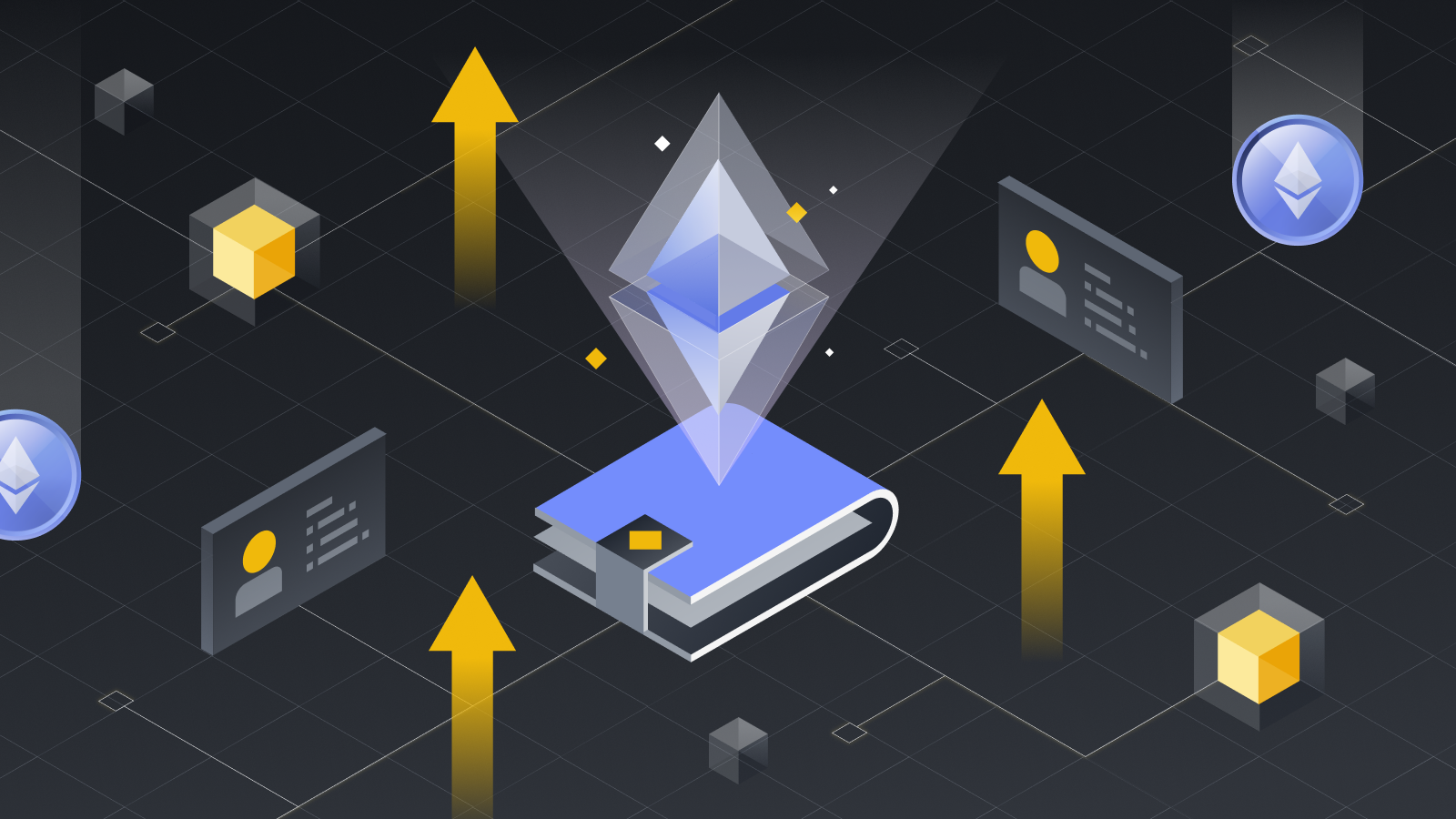Game-Changer Alert: ERC Standards Rewriting the Rules of Digital Ownership
 Ajay Bhakar
Ajay Bhakar
Ethereum reigns with a $24 billion Total Value Locked on DefiLlama, hosting over 800 dApps. Established in 2015 by Vitalik Buterin and Gavin Wood, Ethereum is the premier choice for crypto projects. The community-driven creation and maintenance of ERC standards, including ERC20, ERC721, and ERC1155, underpin the success of stablecoins, NFTs, and DeFi initiatives. This article explores the nuances of ERC standards, detailing their advantages and commonly adopted tokens in today's crypto landscape. ERC token standards are instrumental in promoting interoperability and usability for Ethereum-based tokens, solidifying Ethereum's standing through its reputation, reliability, and diverse standards. Join us on this brief yet insightful journey into the world of ERC standards!
What is meant by ERC Standards?
ERC, or "Ethereum Request for Comments," establishes vital guidelines for smart contract creation on the Ethereum blockchain. Key standards like ERC-20, ERC-721, ERC-777, ERC1400, and ERC-1155 ensure seamless interoperability and compatibility for Ethereum-based tokens. Developers must adhere to these standards, defining rules for token ownership, transfer functions, and security protocols. Non-compliant tokens may lack essential functionalities. ERC standards, including ERC-20, ERC-721, ERC-777, ERC1400, and ERC-1155, play a pivotal role in creating fungible, non-fungible, and semi-fungible tokens, serving as the bedrock for robust token development within the dynamic crypto market.
Top 10 ERC Token Standards
In the evolving landscape of tokenization, understanding top ERC standards is crucial for seamless functionality and security. The key ERC Token standards on the Ethereum blockchain include ERC-20, ERC-223, ERC-721, ERC-165, ERC-621, ERC-777, ERC-1400, ERC-884, ERC-1155, and the innovative ERC-6551.
ERC20
ERC-223
ERC-721
ERC-165
ERC-621
ERC-777
ERC-1400
ERC-884
ERC-1155
ERC-6551
ERC20 Token Standard :
ERC20, the favored Ethereum token standard, reigns in the crypto realm for its fungibility, making tokens interchangeable. Governed by rules, ERC20 tokens boast diverse functionalities, checking wallet balances, and more. Crafted by developers adhering to standards, these tokens align with 20 fungible tokens and global Dapps. Ideal for startups, ERC20 finds use in utility tokens, security tokens, and stablecoin creation. Its popularity shines in initial coin offerings (ICOs), where utility tokens thrive, and security token offerings (STOs) rely on its robust framework, making it a top choice for entrepreneurs entering the crypto space.
ERC223 Token Standard :
The purpose of this standard is to address the ERC20 tokens standard's token loss problem. If the smart contract is unable to handle the ERC20 tokens after incorporating their data, some of the tokens are burned and cannot be recovered. The ERC223 standard is meant to prevent this.
Tokens that arrive at their smart contract addresses might be accepted or rejected by developers. If the smart contract cannot complete the transfer function and does not burn any tokens, then it will fail. In the crypto world, this is gradually becoming more and more popular despite the little differences.
ERC721 Token Standard :
A well-known Ethereum-based token standard called ERC721 specifies a set of guidelines for creating distinct tokens known as non-fungible tokens (NFTs). In the Ethereum network, it is among the finest ERC standards. Non-fungible tokens (NFTs) are distinct from regular crypto tokens in that they cannot be divided or swapped for another token.
Every non-fungible token generated on the Ethereum network will have a unique identification that sets it apart from other NFTs, thanks to the ERC721 Token. It is particularly useful for displaying unique things on the blockchain, such as collectibles, rare items, and ownership of digital assets. Some well-known instances of Ethereum-created non-fungible tokens are Old Bored Yacht Club, Cryptokitties, and Crypto Apes.
ERC165 Token Standard :
The ERC721 standard's supporting token standard is ERC165. Its primary goal is to make connections between dApps and smart contracts on the Ethereum blockchain network more effective. Interoperable dApps and smart contracts will benefit from the creation of a standard smart contract.
The "supportsInterface" specification for ERC165 allows a single interface to be held in memory. It receives a 4-byte interface ID as input and outputs a boolean value that indicates the contract that runs the interface. As a result, a smart contract can communicate through both supporting and Dapp interfaces with any other Dapp.
ERC621 Token Standard :
The Ethereum blockchain's proposed ERC621 token standard enhances the functionality of the ERC20 and ERC223 standards. This standard allows token producers to adjust the overall amount in circulation. It helps to ensure price stability and the token economy.
Tokens made with ERC621 can be burned by sending them to a designated burn address, which will take them out of circulation forever. As a result, there is less supply of tokens available, more demand, and possibly even more token value in the cryptocurrency market.
ERC777 Token Standard :
The Ethereum blockchain's most notable ERC standard, ERC 777, combines the features of ERC20 and ERC223 standards. This was an enhanced ERC20 standard that went on to become the industry standard for Ethereum token creation.
The fact that ERC777 has a new function called "send" that permits faster token transfers is one of its main advantages over ERC20. Token transfers in ERC20 require two distinct transactions, which could lead to high processing costs and lengthy processing times. Conversely, with ERC777, token transfers take place in a single transaction, making it more economical.
ERC1400 Token Standard :
ERC1400 is a top-notch security token standard that emerged specifically to create, issue, and trade security tokens. Without this standard, security token offering development is not possible. The ERC1400 standard integrates new and existing token standards intending to create a cooperative framework for all security tokens. It is developed from the ST20 protocol as a flexible and extensible set of standards. To resolve the issues in security token creation, the ERC1400 standard has its origin.
ERC884 Token Standard :
ERC 884 is a suggested ERC standard on Ethereum blockchain that expands the functionalities of ERC20 and ERC721 standards. A core advantage of ERC884 is it allows the fractional ownership of various real-world assets, including properties or commodities stored on the blockchain. It can facilitate the creation of new financial investment opportunities that offer greater liquidity and transparency for asset ownership.
ERC1155 Token Standard:
ERC1155, an innovative ERC standard, enables users to create both fungible and non-fungible tokens using a single smart contract. This singular contract brings enhanced flexibility and efficiency to the forefront of token creation.
A key advantage of ERC1155 lies in its ability to significantly reduce the number of transactions required for single tokens. This streamlined approach allows blockchain developers to design a smart contract handling both fungible tokens and non-fungible tokens (NFTs), simplifying the intricacies of dApp development.
These ERC1155 Tokens possess characteristics of both fungible and non-fungible tokens, creating a semi-fungible nature. In scenarios like gaming, where unique NFT items coexist with shareable fungible items, ERC1155 tokens prove invaluable for developers in gaming platforms and the Metaverse.
ERC6551 Token Standard :
ERC6551 introduces a cutting-edge token standard on the Ethereum blockchain, surpassing its predecessors with advanced features. This novel ERC standard is a recent addition to the crypto market, offering a unique approach to tokenization by merging the best features of ERC-20 and ERC-721. Positioned as a pivotal player in the crypto sphere, the ERC6551 token is versatile, finding application in Decentralized Finance (DeFi), Supply Chain Management, Gaming, and Collectibles. Its success hinges on widespread adoption, scalability, and stringent security measures, making it a potential game-changer in various industries.
Conclusion:
In conclusion, ERC standards have played a pivotal role in propelling the growth and advancement of the Ethereum network. These standards, serving as a universal guide, empower developers to create Native Tokens, DeFi projects, NFTs, and more with seamless compatibility across Ethereum-based applications. Adhering to ERC standards is paramount for constructing functional and feature-rich Ethereum-based applications. As startups navigate their tokenization journey, the flexibility of choosing from fungible, non-fungible, and semi-fungible Ethereum token standards becomes crucial. For those embarking on Ethereum token development, Coinsclone stands as a seasoned partner, offering premium features and a comprehensive suite of crypto-related services, including exchange development, payment gateway solutions, and NFT marketplace development. Elevate your business in the crypto marketplace with Coinsclone's expertise and unlock substantial revenue opportunities!
Subscribe to my newsletter
Read articles from Ajay Bhakar directly inside your inbox. Subscribe to the newsletter, and don't miss out.
Written by

Ajay Bhakar
Ajay Bhakar
Final Year BTech Student at IIIT Dharwad and building cool Dapps.